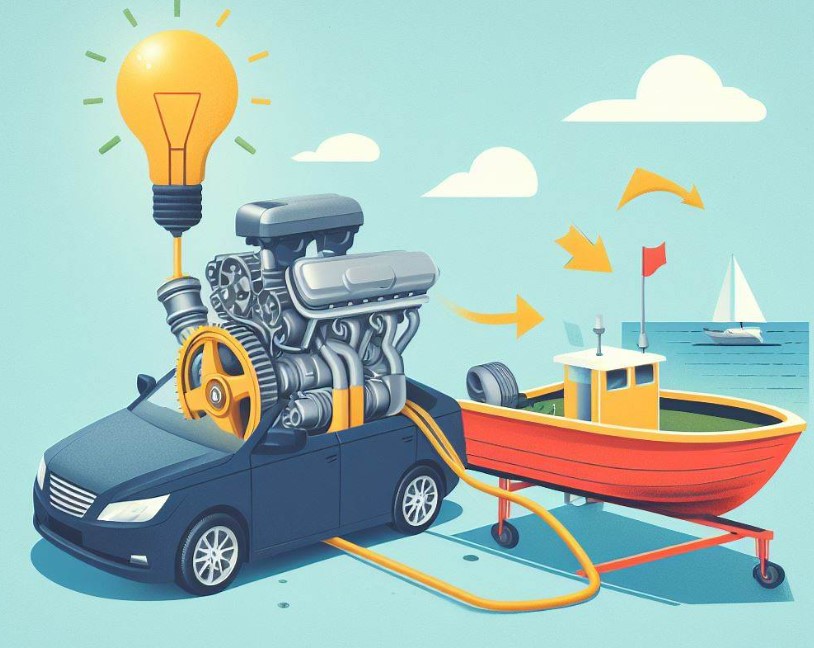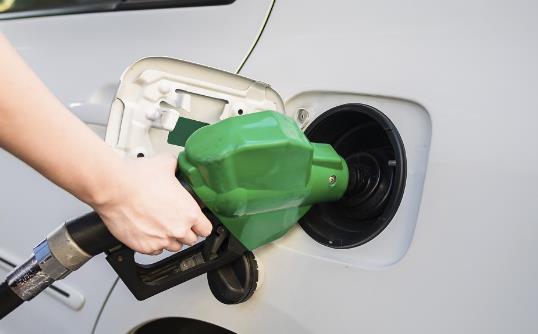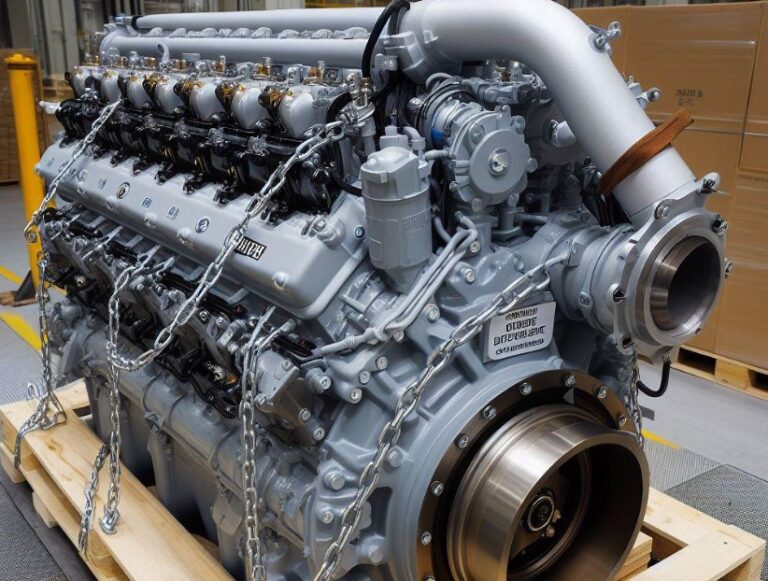How To Convert Car Engine To Boat Engine? 8 Easy Steps
This article aims to provide information on How To Convert Car Engine To Boat Engine? Converting a car engine to a boat engine is a fascinating challenge. It requires a deep understanding of both automotive and marine mechanics.
The process involves not just the transplantation of the engine but also significant modifications to ensure it operates effectively in a marine environment. This article explores the detailed steps and considerations necessary for this conversion, ensuring a smooth transition from land to water.
Key Takeaways
- Understanding the differences between car and boat engines.
- Steps for converting a car engine to a boat engine.
- Necessary modifications and equipment.
- Safety considerations during conversion.
- Maintenance tips for a converted boat engine.
How To Convert Car Engine To Boat Engine?
To convert a car engine to a boat engine, you need to follow these key steps:
- Select a Suitable Engine: Choose a car engine known for durability and high torque.
- Modify the Cooling System: Replace the air-cooling system of the car engine with a marine-grade water-cooling system.
- Upgrade the Exhaust System: Adapt the exhaust for marine use, typically with water injection to prevent backflow.
- Alter the Fuel System: Ensure the fuel system is safe and efficient for marine conditions.
- Install Marine-Grade Components: Use corrosion-resistant materials and parts designed for marine environments.
- Configure the Engine Mounting: Modify the engine mounts to fit the boat’s structure and align with the propulsion system.
- Electrical System Adjustments: Waterproof and adapt the electrical system for the marine setting.
- Test and Fine-Tune: After installation, thoroughly test the engine and make necessary adjustments for optimal performance.

Differences Between Car and Boat Engines
Car engines and boat engines, while similar in many aspects, have distinct differences. Understanding these differences is crucial for a successful conversion.
Structural and Functional Variations
Car engines are designed for air cooling and operate under different loads compared to boat engines. Boat engines, on the other hand, are typically water-cooled and face constant high-load conditions. This difference in cooling systems and load management is fundamental in the conversion process.
Adaptation to Marine Environment
The marine environment poses unique challenges such as corrosion and moisture. Car engines must be modified to withstand these conditions. This includes using marine-grade materials and making changes to the exhaust system to prevent water backflow.
Steps to Convert a Car Engine to a Boat Engine
Converting a car engine into a boat engine is a meticulous process that involves several key steps.

Engine Selection and Initial Assessment
Choosing the right car engine is the first critical step. Engines with high torque and durability are preferable. An initial assessment of the engine’s condition is necessary to determine its suitability for conversion.
Necessary Modifications
Modifications include adapting the cooling system to a closed-circuit water cooling system and altering the exhaust system for marine use. The fuel system also needs adjustments to ensure it meets marine safety standards.
Equipment and Tools Required for Conversion
A successful conversion requires specific tools and equipment.
List of Essential Tools
Tools such as engine hoists, wrench sets, and specialized marine conversion kits are essential. It’s important to have a comprehensive toolset to handle various aspects of the conversion process.
Sourcing Quality Parts
Using high-quality, marine-grade parts is vital for the engine’s longevity and performance. This includes parts like marine carburetors, water pumps, and corrosion-resistant components.
Safety Considerations
Safety is paramount during the conversion process.
Risk Assessment
A thorough risk assessment should be conducted to identify potential hazards. This includes understanding the risks associated with handling engine components and the use of tools.
Implementing Safety Measures
Appropriate safety measures, such as the use of personal protective equipment and adherence to marine safety standards, are crucial.
Maintenance of a Converted Boat Engine
Maintaining a converted boat engine requires attention to detail.

Regular Maintenance Schedule
A regular maintenance schedule is essential to ensure the engine’s longevity. This includes routine checks of the cooling system, oil changes, and inspections for corrosion.
Handling Wear and Tear
Understanding the wear and tear specific to marine environments helps in addressing potential issues proactively.
Advanced Modifications for Enhanced Performance
After the basic conversion, further modifications can significantly enhance the performance and reliability of the engine in a marine setting.
Upgrading Engine Components
Consider upgrading components such as the camshaft, pistons, and valves to better suit the high-load marine environment. These upgrades can improve efficiency and power output, crucial for marine applications.
Implementing Electronic Fuel Injection (EFI)
Replacing a carburetor with an EFI system can significantly improve fuel efficiency and engine response. This modernization step is essential for ensuring optimal performance in varying marine conditions.
Tuning and Calibration for Marine Use
Post-conversion, tuning, and calibration are crucial for ensuring that the engine operates effectively in its new marine role.
Fine-Tuning Engine Settings
Adjustments to the ignition timing, air-fuel mixture, and idle speed are necessary to match the unique demands of marine operation. This tuning ensures that the engine runs smoothly and efficiently.
Calibration of Marine Instruments
Calibrating marine instruments such as the tachometer, temperature gauges, and oil pressure sensors is vital for accurate monitoring of engine performance. This helps in maintaining optimal engine health and preemptively identifying potential issues.
Troubleshooting Common Conversion Issues
Conversion projects may encounter several common issues that require troubleshooting.

Addressing Overheating Problems
Overheating can be a significant problem in converted engines. Ensuring a properly functioning cooling system and checking for blockages in water passages are critical steps in resolving overheating issues.
Dealing with Vibration and Noise
Excessive vibration and noise can indicate misalignment or imbalance in the engine setup. Checking the engine mounts, propeller shaft alignment, and balancing the rotating assemblies can help mitigate these issues.
Can A Car Engine Be Used As A Boat Engine?
Yes, a car engine can be used as a boat engine, although the process involves significant modifications. The concept of using a car engine in a boat, known as a marine conversion, has been practiced for years by enthusiasts and professionals alike.
However, it’s not a simple plug-and-play operation. The car engine must undergo numerous adaptations to function effectively and safely in a marine environment.
Necessary Modifications for Marine Use
Car engines need to be modified to handle the continuous high-load conditions typical in marine settings. These modifications often include changing the cooling system to a closed-loop water-cooled system, altering the exhaust system to be water-injected, and ensuring that all parts are corrosion-resistant.
Additionally, the engine’s mounting and alignment need to be adapted for compatibility with marine propulsion systems.
Performance and Reliability
After conversion, the performance of the engine can be quite reliable if the modifications are done correctly. Regular maintenance and checks become even more crucial in a marine setting due to the harsher operating conditions.
Are Marine Engines Different Than Car Engines?
Marine engines differ significantly from car engines in design, operation, and maintenance requirements. These differences stem from the unique demands of the marine environment and the specific performance needs of boats.

Design and Structural Differences
Marine engines are typically built to withstand constant heavy loads and prolonged periods of operation, which is quite different from the intermittent and varied loads experienced by car engines.
They are also specifically designed to resist corrosion and damage from saltwater, a challenge that car engines do not typically face. Moreover, marine engines often employ water cooling systems as opposed to the air cooling systems in most car engines.
Operational and Maintenance Differences
In terms of operation, marine engines must be capable of running efficiently at full power for extended periods, something car engines are not regularly subjected to.
The maintenance schedule for marine engines is also more rigorous, given the harsh marine environment. Regular checks for corrosion, saltwater damage, and system integrity are crucial for ensuring the longevity and safety of marine engines.
How Much Does A Boat Engine Swap Cost?
The cost of a boat engine swap can vary widely based on several factors including the type of engine being installed, the specific boat model, and the extent of modifications required.
It’s a complex process that involves not just the cost of the engine itself but also the labor, additional parts, and potential modifications to the boat’s structure and systems.
Factors Influencing the Cost
The primary cost factor is the engine itself. New marine engines can range from a few thousand dollars for smaller models to tens of thousands for larger, more powerful units. Used or refurbished engines can reduce this cost significantly.
Labor costs are another major factor, as engine swaps require specialized skills and can be labor-intensive. Additional costs can include new mounts, fuel system upgrades, exhaust system modifications, and electrical work.
Average Price Range
On average, a basic boat engine swap can cost anywhere from $3,000 to $8,000 for smaller boats with less powerful engines. For larger vessels or more advanced engines, this cost can easily exceed $20,000. It’s also important to factor in the costs of ongoing maintenance and potential future repairs.
Can You Put A Car Engine In A Jet Boat?
Yes, it is possible to put a car engine in a jet boat, and this practice has been successfully implemented in various custom boat projects. However, this is a complex process that requires significant modifications and understanding of both automotive and marine engineering.

Technical Considerations for the Conversion
When adapting a car engine for a jet boat, several key factors must be considered. Firstly, the engine must be able to handle the continuous high load typical in marine applications.
Modifications to the cooling system are essential, as car engines are usually air-cooled while marine engines are water-cooled.
The engine also needs to be modified for compatibility with the jet drive system, which involves adapting the engine’s output to connect with the jet pump.
Challenges and Expertise Required
The conversion requires specialized knowledge in both automotive and marine mechanics. Balancing the engine for marine use, ensuring adequate water-sealing, and modifying the fuel system for safety and efficiency are critical challenges. It’s a task that often requires the expertise of both a skilled mechanic and a marine engineer.
Conclusion
Converting a car engine to a boat engine is a complex yet rewarding process. It demands a thorough understanding of both automotive and marine mechanics, careful planning, and meticulous execution.
By following the outlined steps and considerations, enthusiasts can transform a car engine into a reliable and efficient boat engine. This conversion not only showcases mechanical ingenuity but also offers a unique solution to marine propulsion.
People Also Ask
How long does the conversion process typically take?
The time required for a conversion can vary widely, depending on the engine’s condition and the extent of modifications needed. Typically, it can take anywhere from a few weeks to several months.
Can any car engine be converted for marine use?
While many car engines can be converted, not all are suitable. Engines with robust construction, high torque, and good reliability records are preferred.
What is the cost implication of such a conversion?
The cost of converting a car engine to a boat engine varies based on the engine type and the extent of modifications. It can range from a few thousand dollars to much more for high-end conversions.
How does a marine conversion affect an engine’s lifespan?
With proper maintenance and care, a converted engine can have a long lifespan. However, the marine environment is harsher, and regular checks are essential for longevity.
Are there legal or regulatory considerations to keep in mind?
Yes, marine engines must comply with specific safety and environmental regulations. It’s important to be aware of these regulations in your region.

Welcome to the exhilarating world of Matt Rex, a professional car racer turned renowned vehicle enthusiast. Immerse yourself in his captivating blog as he shares heart-pounding adventures, expert reviews, and valuable insights on cars, trucks, jets, and more. Fuel your passion for speed and discover the beauty of vehicles through Matt’s engaging stories and meticulous expertise. Join the ever-growing community of enthusiasts who find inspiration and expert advice in Matt Rex’s blog—a digital hub where the thrill of speed meets the pursuit of knowledge.



![Nissan Connect Keeps Restarting [How To Fix This?]](https://www.turbochaos.com/wp-content/uploads/2024/01/Nissan-Connect-Keeps-Restarting-768x708.jpg)


